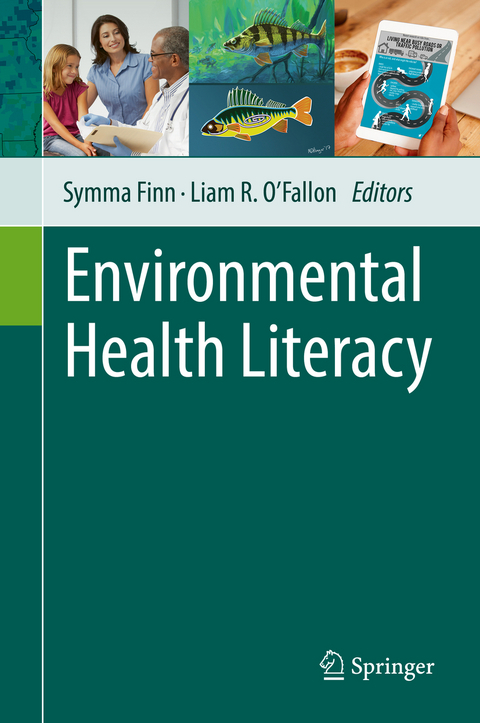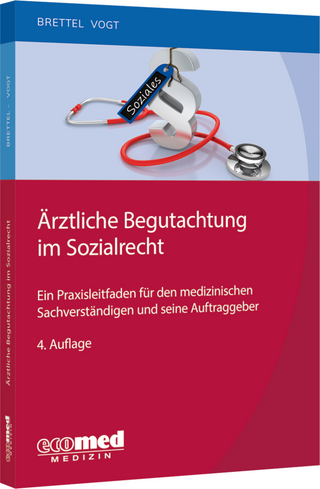
Environmental Health Literacy
Springer International Publishing (Verlag)
978-3-319-94107-3 (ISBN)
This book explores various and distinct aspects of environmental health literacy (EHL) from the perspective of investigators working in this emerging field and their community partners in research. Chapters aim to distinguish EHL from health literacy and environmental health education in order to classify it as a unique field with its own purposes and outcomes. Contributions in this book represent the key aspects of communication, dissemination and implementation, and social scientific research related to environmental health sciences and the range of expertise and interest in EHL.
Readers will learn about the conceptual framework and underlying philosophical tenets of EHL, and its relation to health literacy and communications research. Special attention is given to topics like dissemination and implementation of culturally relevant environmental risk messaging, and promotion of EHL through visual technologies. Authoritative entries by experts also focus on important approaches to advancing EHL through community-engaged research and by engaging teachers and students at an early age through developing innovative STEM curriculum. The significance of theater is highlighted by describing the use of an interactive theater experience as an approach that enables community residents to express themselves in non-verbal ways.Dr. Symma Finn received her Ph.D. in medical anthropology from the University of Florida (UF) in 2008 for her work on quantifying empowerment in a rare genetic disease community. She administers social and behavioral research, develops new areas of interest in communications and environmental health literacy, and oversees communication and outreach activities for the Breast Cancer and the Environment Research Program and for the Centers of Excellence on Environmental Health Disparities Research. Her areas of specialty include social and behavioral research, environmental health disparities, environmental health literacy, dissemination and implementation research, and community-engaged research and citizen science. Dr. Finn serves as point of contact for Tribal research at NIEHS and participates in a number of federal committees related to Tribal affairs, environmental justice and workforce diversity in biomedical and environmental health professions. Liam O'Fallon received his Master's degree in Latin American Studies from Tulane University in 1997, where he specialized in medical anthropology and international health . He leads the Partnerships for Environmental Public Health program at the National Institute of Environmental Health Services. He directs the Community Engagement Cores that are a part of the network of Environmental Health Science Core Centers, the Centers for Children's Environmental Health Program, and the Centers of Excellence on Environmental Health Disparities Research . He formerly worked at the U.S. Department of Health and Human Services, in the Office of International and Refugee Health, where he coordinated an interagency, binational working group addressing environmental health issues along the U.S.-Mexico border. His areas of specialty include community-engaged research, environmental justice, science education and environmental health literacy.
Introduction.- Section I: Foundations of Environmental Health Literacy.- Defining Environmental Health Literacy.- Measuring Environmental Health Literacy.- Communications Research in the Environmental Health Sciences.- Section II: Raising EHL in the Research Context among Diverse Audiences.- Engaging with Ethnically Diverse Community Groups.- Advancing Environmental Health Literacy through Community-Engaged Research and Popular Education.- Returning Chemical Exposure Results to Individuals and Communities.- Strengthening Environmental Health Literacy through Precollege STEM and Environmental Health Education.- Health Professionals' Environmental Health Literacy.- Section III: Types of Communication Styles and their Effectiveness at Raising EHL.- Use of Traditional and Culturally Appropriate Modalities.- Blogs, Twitter and Facebook: New Modalities for Raising EHL.- Using Augusto Boal's Theatre of the Oppressed in a Community-based Participatory Research Approach to Environmental Health Literacy.- Tactile Approaches to Help Learners Visualize Key Processes in Environmental Health Sciences.- Conclusion.- Index.
| Erscheinungsdatum | 11.09.2018 |
|---|---|
| Zusatzinfo | XIV, 344 p. 55 illus., 48 illus. in color. |
| Verlagsort | Cham |
| Sprache | englisch |
| Maße | 155 x 235 mm |
| Gewicht | 696 g |
| Themenwelt | Medizin / Pharmazie ► Medizinische Fachgebiete ► Arbeits- / Sozial- / Umweltmedizin |
| Naturwissenschaften ► Geowissenschaften | |
| Schlagworte | Community-engaged research • Disproportionate exposure to environmental stresso • Disproportionate exposure to environmental stressors • Dissemination of health information • Environmental and social stressors • Generic risk messages • Health risk communication • Persistent bioaccumulative toxics • Public health education • Visually accessible health information |
| ISBN-10 | 3-319-94107-0 / 3319941070 |
| ISBN-13 | 978-3-319-94107-3 / 9783319941073 |
| Zustand | Neuware |
| Haben Sie eine Frage zum Produkt? |
aus dem Bereich


